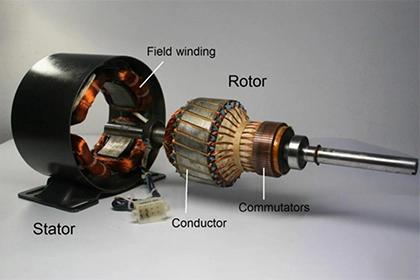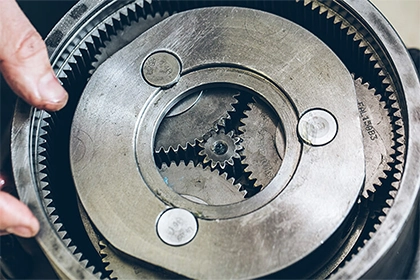
Why is the starting current of the motor so high?
When the motor starts, there is usually a large starting current. The main reason for the large starting current of the motor is that at the moment of starting, the rotor has not yet started to rotate, and the current in the stator winding is the largest at this time.
Electric motors are widely used in various industrial and commercial applications, from powering machines to driving pumps and compressors. One of the most common issues faced by electric motors is high starting current, which can cause several problems, such as overloading the motor, tripping circuit breakers, voltage drops, and equipment damage. In this essay, we will explore the reasons behind high starting current in electric motors and methods to reduce it.
Torque production mechanisms
All electric motors generate torque by interacting magnetic fields. In Induction motors, the rotating stator magnetic field induces currents in the stationary rotor conductors. At start-up when the rotor is static, it offers maximum counter-electromotive force (EMF) to the stator flux, resulting in very low impedance and high currents. Motors utilizing reluctance or brushless DC principles also experience maximum opposing EMF and currents during synchronization of rotor and stator fields from standstill. Fundamentally, producing torque from zero mechanical speed requires maximizing stator amperage.
Impact of rotor design parameters
The construction details of a motor's rotor further influence starting currents. Squirrel cage rotor bars in induction motors tend to be short-circuited tightly to increase starting torque capability. However, this also reduces bar impedance, allowing larger transient currents. Permanent magnet or wound rotor designs possess similar demagnetization concerns if high load currents are not mitigated upon power-up. Rotor materials and winding layout choices impact starting current levels.
Control strategies to limit inrush
Various soft-start and variable frequency drive techniques have been developed to control current surges. By gradually applying voltage instead of the full voltage instantly, soft-starters enable smoother acceleration and reduce thermal/mechanical stress. Closed-loop vector or field-oriented control schemes employed in sophisticated drives can precisely regulate slip to optimize torque-to-current ratios during startup transient conditions.
Conclusion
In summary, high starting currents are an inevitable consequence of the electromagnetic principles behind motor torque generation. Strategic designs and controls have helped minimize inrush impacts in modern motor installations. A thorough understanding of these technical factors remains pivotal for any electric motor engineering application involving start-stop duty cycles.



Leave a Comment